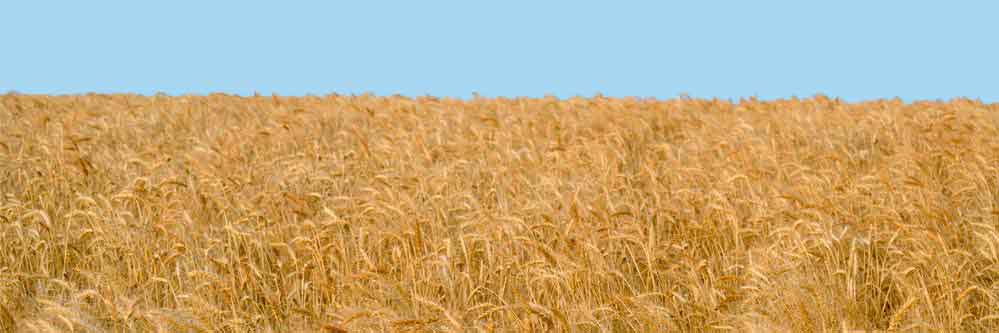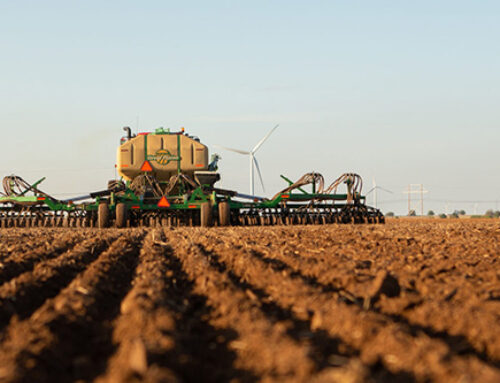As wheat harvest is wrapping up over a good portion of the country, “it’s not too early to start thinking about your wheat seed needs for this fall,” states Dwight Koops, Crop Quest President. In some areas there may be shortages of seed wheat due to adverse growing conditions this past season over the High Plains. “Hopefully everyone will be able to procure all of their needs,” comments Koops.
Value of Quality Wheat Seed and Seed Treatments
There is a noticeable benefit to planting quality seed. Yield potential increases significantly by following some good cultural practices and planting varieties that have a proven track record in your area.
Oklahoma State University defines Quality Seed as the following:1. Free of weed seed
2. Purity
3. High germination percentage
4. High vigor
5. Free of foreign material
6. Free from small and/or shriveled kernels
Not one factor alone will significantly affect overall yield potential, but the combination of these factors has a proven benefit. With just a little time and effort, all these factors are very manageable. It starts with getting wheat seed cleaned and sized. A wet paper towel, a zip lock bag, and 100 seeds can help you determine the germination rate of the seed.
Although the research is not definitive whether large seed gives a consistently higher yield, it is very important that small and shriveled seed be removed from seed wheat. Larger seeds generally have better potential for early vigor. Consistent seed size will lead to more uniform germination and emergence. Studies show that small seed actually germinates quicker than large seed. Larger seeds need to imbibe more water than smaller seeds, so the smaller seeds tend to germinate quicker. Even emergence and even stands get a crop off to a good start.
Don’t discount the importance of planting weed free seed. Besides yield loss due to weed pressure, introduction of new species, especially bromes or jointed goatgrass can cause headaches for years to come.
It is common to keep grain harvested the previous season for seed. There is nothing wrong with growing and saving your own seed, as long as it has been cleaned, sized and is reasonably pure from other varieties. If you did not take time to clean out planting equipment while switching varieties from field to field, the purity of the variety in that field may be suspect. Avoid taking wheat seed from fields that contain more than one variety or where there are too many off-types.
It is also important to take note if any loose smut was present in the wheat field where the seed was produced. Any field that contains loose smut should not be saved for seed. Even though the seed may appear normal, the disease is carried in the seed, and will develop again once the seed is planted. You can expect an increase in loose smut the following year. Seed treatments containing fungicides can control loose smut, as well as other seedling pathogens.
Seed treatments are generally a good investment. If you have taken the time to plant a quality seed, it makes sense to protect that investment by protecting it from seedling diseases and insects. There are a number of products that contain both an insecticide and a fungicide.
Choosing New or Replacement Varieties
“It is also a good practice to plant a portion of your farm to certified or registered seed each year,” says Koops. “This will insure that you are planting improved varieties, and re-establishing a purer seed stock,” he adds. Certified or Registered seed will cost more, but it also brings opportunity to plant varieties that have improved disease and insect resistance, traits that are more suited for your area, and ultimately higher yield potential. “It is important that you plant more than one variety on your farm. We have all seen varieties perform very well one year; then the next year, the same variety can be very disappointing,” recalls Koops. Multiple varieties will spread out that risk. “This also gives you time to determine whether a variety needs to stay in your lineup, or be phased out,” says Koops.
Just as you keep up on the latest hybrids and varieties of your row crops; it is important that you do the same with wheat. There are numerous publications that can help you see yield trends of varieties in your area. They can guide you to make informed decisions when you are looking for replacement varieties. Your Crop Quest Agronomist is also a great source for these management decisions.
Optimum Planting Dates Vary
Getting wheat off to a good start, after procuring high quality wheat seed is determined by several management practices. “The time of planting or the seeding date is critical, and can vary across the states and even within a state,” explains Ron O’Hanlon, CEO. Planting dates can be found in the various state extension bulletins. What really determines the planting date is optimum soil temperatures and the Hessian Fly Free dates. See the figure at the right from Oklahoma State University showing the sensitivity of wheat varieties to soil temperature. Wheat can germinate in soil temperatures from 40 to 99 degrees F, but more optimal temperatures are in the range of 54 to 77 degrees F. It is not uncommon to start planting as soil temperatures drop below the mid-80s for those areas where the soil temperatures remain high well into late fall, or someone who wants wheat pasture for fall grazing. Planting during the optimal time usually helps to insure a healthy vigorous plant with good tillering going into the winter season.
The Hessian Fly is a very tiny insect the size of a mosquito. They lay the majority of their eggs in the fall at the base of the wheat plant. Hessian Fly can have a devastating impact in those areas where the wheat is planted too early. This can allow multiple generations to develop. By following the guidelines from the State Extension Service for each state, most of the damage can be avoided by this simple cultural practice. See the example of the map posted from Kansas for the approximate Fly-Free date.
Soil Testing for Wheat
When a producer contracts acreage with a Crop Quest Agronomist, one of the steps is to pull soil samples from the fields. “While this process seems rather simple, the agronomist must follow specific procedures to insure a representative sample is obtained that will allow an accurate fertilizer recommendation to be made, explains Stan Scheild, Division Manager in Montezuma, KS.
Sampling depth, number of cores pulled for each sample, and where the cores are pulled in the field are three of the most important considerations. “Most Crop Quest Agronomists use a 0-10” surface sample depth for general fertility and some may choose to use a 10”-20” or greater depth for subsoil nitrates,” Schield declares. “Using a depth less than 6” or greater than 10” for the surface sample will impact the lab results for nutrients that are immobile in the soil, making it difficult to correlate the results with university research which is the basis for good fertilizer recommendations,” he continues. As “zone sampling” based on Veris EC data becomes more popular, the decision on where to sample within the field becomes more simplified. Samples can be pulled by keying in on soil texture variability, which often influences yields and subsequently soil nutrient removals. Crop Quest Agronomists are trained in the use of this technology.
Since wheat is responsive to nitrogen, phosphorus and potassium, these tests are routinely requested from the lab. Some soils may be deficient in chloride or sulfur, so these tests are sometimes requested. Wheat seldom responds to most of the micronutrients therefore these test are typically not requested. The report from the lab also may include soil pH, organic matter, and soluble salts. Soil pH is important to help predict the residual of certain herbicides as well as potential injury to the wheat to be planted from extreme high or low pH and to any future rotational crops. Additionally, pH can predict the potential of free aluminum in the soil, possible fixation of applied phosphorus and the need for lime. Organic matter is directly related to the amount of mineralized nitrogen released during the growing season or from a fallow period after samples are collected but prior to seeding of wheat, which can reduce the amount of applied nitrogen fertilizer required. Soluble salts can indicate the development of a saline or sodic soil which may require additional management for successful crop production.
The goal of the Crop Quest Agronomist is to develop a fertilizer program to provide the crop with the required nutrients that the soil cannot provide. If this is accomplished, the producer should minimize his fertilizer expenses while meeting realistic yield goals.
From variety selection to soil testing, planning with your Crop Quest Agronomist can go a long way in making the right decisions for your winter wheat crop. Contact your agronomist for all of your winter wheat management decisions.





